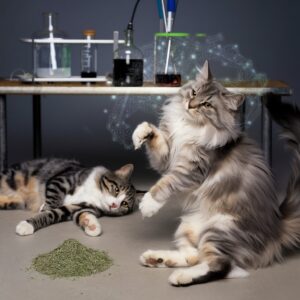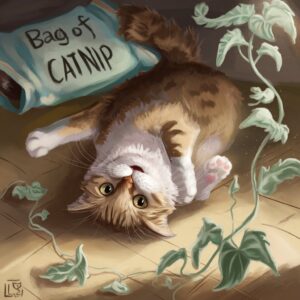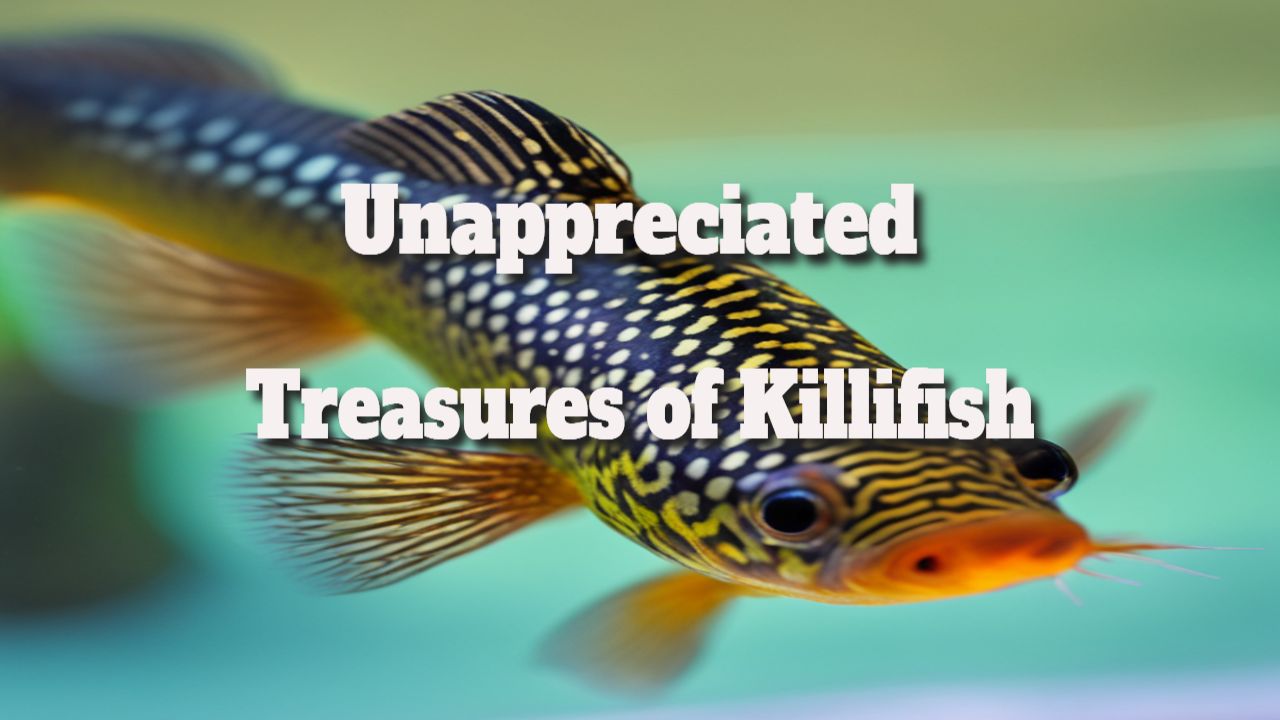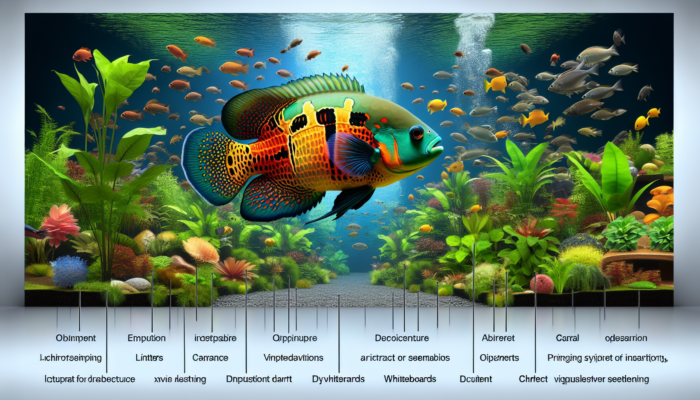Discovering Neighbouring Products for Contented Felines
Contents
- 1 Exploring Catnip Alternatives for Happy Cats
- 1.1 Natural Herbs and Plants That Affect Cats
- 1.2 Synthetic Alternatives to Catnip
- 1.3 Alternative Toys and Activities for Cat Enrichment
- 1.4 Understanding Your Cat’s Preferences
- 1.5 Consulting a Veterinarian for Safe Alternatives
- 1.6 Experimenting with Different Catnip Alternatives
- 1.7 FAQs
- 1.7.1 What is catnip, and why do cats like it?
- 1.7.2 Are there any alternatives to catnip for cats?
- 1.7.3 How do silver vine, valerian root, and honeysuckle compare to catnip?
- 1.7.4 Are there any risks associated with using catnip alternatives for cats?
- 1.7.5 How can I introduce a catnip alternative to my cat?
Exploring Catnip Alternatives for Happy Cats
Okay, here we go. So it’s not just catnip, correct? Like everyone is fascinated with catnip—but kitties deserve better. Silvervine (sounds nice, doesn’t it?), also known as Actinidia polygama—because science always likes to complicate things—has recently emerged in the cat world. Catnip only works for about half of the cats, but Silvervine? That stuff? It collects nearly all of them. It’s almost like magic, but not quite.
There’s something strangely captivating about how Silvervine works. It contains compounds (I forget the names, don’t ask me) that cause cats to behave erratically—rolling around, making that strange deep purr noise that is essentially cat bliss on steroids. It’s almost as if you’ve been listening to the same playlist for years and then come across a new song that makes you feel like you’ve been missing out on life—that’s what Silvervine does for cats. They become bored with the old stuff, too, you know?
Oh, and let us not forget about valerian root. If you believe it is only for people who can’t sleep, think again. For cats, it’s the opposite—it’s as if you’re putting a bomb of excitement into their lives. Add some valerian to the mix, and your cat will start bouncing off the walls like a toddler who has just found sugar for the first time. Isn’t it funny? How something that relaxes humans—like after a tough day of browsing through endless terrible news—drives cats insane. Nature’s irony, I suppose. (I did not see that one coming.)
And what about lemongrass, honestly? I never expected cats to care about this, yet it benefits them. Not sure what. It’s similar to when you’re not awake but yet not exhausted in that strange midway zone. It energises people, but not because it makes you want to zoom around the house at 2 a.m. It seems more like, “Oh, that sounds intriguing.” I might play around with this for a bit. Similarly chamomile. It’s a gentle push, a subtle hint of encouragement—not excessive or insufficient.
If you find yourself in a similar situation, striving to maintain your cat’s interest while managing numerous other responsibilities, incorporating these herbs into their routine might be transformative. Consider it a method to enrich their daily lives by presenting them with new experiences because cats get bored, too—probably more than we realise. Have you ever seen them look off into space as if they were plotting global dominance? Yes, they require some diversity. Otherwise, who knows what they think?
Ultimately, the focus is ensuring your pet remains engaging, lively, and occasionally surprising. Isn’t that the main idea? Maintain an air of mystery and surprise and an engaging and dynamic existence. Ultimately, that’s what truly counts—for every one of us.
Key Takeaways
- Catnip alternatives can provide similar effects to catnip for cats who do not respond to it.
- Natural herbs and plants, such as valerian, silver vine, and honeysuckle, can affect cats similarly to catnip.
- Synthetic alternatives like synthetic pheromones and sprays can also mimic the effects of catnip for cats.
- Alternative toys and activities like puzzle feeders and interactive play can enrich your cat’s environment.
- Understanding your cat’s preferences and reactions to alternatives is essential for finding the right fit.
- Consulting a veterinarian can help ensure that your catnip alternatives are safe and appropriate for your cat.
- Experimenting with different catnip alternatives can help you find the best option for your cat’s enjoyment and enrichment.
 Natural Herbs and Plants That Affect Cats
Natural Herbs and Plants That Affect Cats
Aside from catnip, this whole world of herbs and plants can send cats into a frenzy or, at the very least, perk up their otherwise nonchalant expressions. Take Silver Vine, for instance—technically, Actinidia polygama, but who’s memorizing that? This stuff has been creeping into the hearts of cat enthusiasts everywhere. And while catnip only does the trick for roughly half of the feline population, Silver Vine seems to break through that genetic barrier, lighting up more cats than catnip ever could.
Silver vine’s secret lies in its mix of compounds—whatever’s in there, it flips a switch. You’ve got cats rolling around like they’ve found buried treasure, purring like they’ve just remembered how much they love you. And here’s the kicker: even those cats that have outgrown their catnip phase—because some cats get bored of it—find silver vine refreshing, like it’s the new sensation on the block. But that’s not all; valerian root enters the chat and is like a paradox. While humans down valerian tea to unwind, for cats? It’s a jolt. It turns them into little furry whirlwinds of excitement, zooming around the house in playful fits.
Now, Valerian has this odd dual personality. Cats might go wild, but there’s a weird undertone of relaxation, too, like they’re eventually burning off energy to collapse into a zen-like state. It’s an almost philosophical herb. Then, for a more subtle touch, lemongrass and chamomile sneak in, offering a softer nudge. They’re more for those cats that don’t need fireworks, just a little nudge into mild stimulation—like the difference between espresso and herbal tea for humans.
Tossing these alternatives into the mix isn’t just for fun, though. It’s about shaking up the routine and keeping life interesting for these creatures that spend hours staring into space. It’s enrichment, a way to nurture their curiosity, and probably, let’s face it, give owners a little entertainment, too.
Synthetic Alternatives to Catnip
Recently, the market has seen a significant surge in synthetic catnip options. We’ve agreed that if nature can’t do the job, we’ll make it happen in a lab. Why not? These artificial substitutes exist in various forms, including sprays for air freshening, tiny pellets resembling extraterrestrial food, and even toys drenched in whatever captivates cats. One that stands out? “Cat Attract” is a product that truly embodies its name. It does what it says: it attracts cats, especially to litter boxes (beneficial for angry owners) or toys they didn’t care about before.
The appealing thing about fake stuff is that it’s always the same. Consider this: catnip from nature. It’s not a card. There is a chance that your cat will bounce off the walls with one batch and yawn with another. But man-made things? It’s like tuning in to your cat’s every whim, and it works more reliably than natural herbs sometimes do. This is particularly true if your cat exhibits pickiness and dislikes authentic catnip. It’s almost like flipping a switch; synthetics claim to give you a response.
Not only are some of these items designed to resemble catnip, but they also boast superior quality or a longer lifespan. Cats might get excited about playing for hours instead of just a few minutes and fall asleep without interest. Others employ pheromones or a blend of enticing scents, which resonate with a cat’s fundamental emotions in a manner that herbs alone could never achieve.
However, the natural feel is somewhat lost. There’s something charmingly simple about spreading dried catnip on the floor and letting nature take over. Synthetics, however, are better if you want stability and results. However, as with everything else, a certain level of risk is involved. Cats are very picky, and something that works excellently for one might not work for another. Try it and observe whether your cat becomes enthralled or rolls their eyes if they do so at all.
Alternative Toys and Activities for Cat Enrichment
Ah, catnip—that well-known plant that appears to win the heart of every cat on the planet. My, isn’t that the standard saying? Your typically sombre cat transforms into an energetic, purring, and joyful child when you give it to her in the hopes of a rapid transformation. Unless it doesn’t work, of course! Some cats stare at it, like, “Is this a joke?” That’s where Silver Vine comes in, swinging in like a superhero with a cape no one asked for. And silver vine? Actinidia polygama—fancy name, correct? It almost sounds like something you’d need a prescription for. The wild part is that Silver Vine is catnip on steroids for some cats. Imagine catnip being your basic Starbucks run. But silver vine? That’s the boutique coffee shop with a cold brew steeped for 48 hours—only the most discerning cats even know about it. In this case, more cats are into silver vine than catnip. So it’s like—opposite day?
I’ll never forget trying it on Luna. Total drama queen, that one. Catnip? Beneath her. I’ve seen her sniff it, flick her tail, and then give me the coldest look like I’d insulted her lineage. But silver vine? Different story. I brought some home, thinking, “Well, here goes nothing.” She took one sniff and just—lost it. Rolling around, drooling—her eyes wide like she’d just discovered the meaning of life. (Or at least a particularly excellent sunbeam.) The smell, though—ugh, I am not going to lie—has this weird mix of damp old books and… ripe fruit. You know, the kind that’s been left out just a little too long? Yeah. It’s not my favourite, but you get used to it. Or maybe you don’t! That’s okay!

I’d love to share some information about valerian root with you! Oh, wow! I’m sure you’re familiar with it! People use it to help them sleep; it’s meant to help you drift off—like a cosy little sleeping aid from nature. So, what about cats? Nope. Nope. It feels like someone just turned on their hyperdrive! My friend’s cat, Milo, once got into some valerian, and I promise you, he spent the next hour chasing… absolutely nothing! It was quite the sight—he was running in circles, swatting at the air as if it owed him something! You have to wonder, how does something that makes us chill have the opposite effect on them? But that’s cats—always zigging when you think they’ll zag.
You are speaking of opposites—lemongrass. It’s a weird transition, but stick with me. Lemongrass, to us, smells like you’re walking into a spa, right? Total “ahhh” vibes. Diffuse it, and you’re instantly more zen. For some cats, though? They love it. It’s not a silver vine level of obsession, but it’s definitely on their radar. For sure, not Luna, though. Seriously? She gives me that “this is so not worth my time” look and breezes past as if I’ve upset her just by thinking about it. Hey, have you heard about chamomile? It’s pretty funny! For sure, that chamomile. Hey, the tea’s all set! It’s all about helping you relax and take it easy, just the good vibes. Cats? It’s hit or miss. Some will take a sniff and wander off like nothing happened, while others—like Luna on a good day—might mellow out. However, be honest: cats don’t need help in the “doing nothing” department. They’ve already mastered that ancient art.
But here’s the kicker—sometimes I think we’re all just guessing with these herbs. It’s like throwing darts at a board, blindfolded. Are we enriching their lives or projecting our weird wellness obsessions onto them? I mean, let’s not forget that humans do this, too. Pumpkin spice lattes, anyone? Not everyone’s into it (you’d think we all were, based on the amount of Instagram posts every fall), but we still hype it up like it’s the second coming of coffee. It’s the same thing with our cats and these plant concoctions. We think they care—do they?
But hey, that’s what makes it fun, right? Switching it up and trying new stuff—tossing some valerian at them one day and maybe some silver vine the next. It’s kind of like switching up your playlists. Stays fresh. It keeps them on their toes, I guess? I hope so. Maybe Luna’s into Silver Vine one week, but she’s digging the chamomile next month. Okay, probably not. But it’s fun to imagine. Trial and error is half the game with cats; that keeps it interesting. It keeps us on our toes, trying to outsmart creatures that, deep down, probably know we’re just playing along. Instincts.

Understanding Your Cat’s Preferences
Each cat’s tastes and habits can significantly affect how it reacts to different things. Knowing these tastes is essential to pick the best alternatives to catnip and other enrichment activities. Herbs may stimulate some cats, but others may love the excitement of interactive toys or man-made things.
Whether it’s chasing a feather toy or playing with a plush mouse filled with valerian root, observing a cat’s play can help you determine its preferred activity. Age, attitude, and life experiences can all influence a cat’s taste. Kittens might like to play quickly with interactive toys, while older cats like less intense activities, like herbs that calm them down or cosy places to rest.
By learning about these slight differences in behaviour and interests, cat owners can ensure their cats’ enrichment meets their needs. This personalised method improves the game and strengthens the bond between pet owner and pet, showing the cat that the owner cares about and understands them.
Consulting a Veterinarian for Safe Alternatives
When diving into the rabbit hole of catnip alternatives—or any random product you might want to toss into your feline’s little world—it’s a no-brainer to check in with a vet. These folks? They’ve got the expertise to steer you away from the occasional “Oh, this herb looks safe” impulse and toward something that won’t wreak havoc on your cat’s system. Trust me; not every cat reacts the same way. Some have hidden quirks—health issues bubbling under the surface or sensitivities no one knew about until something new is introduced.
And let’s not forget, your vet isn’t just there to stamp a giant “approved” on a product. They’ve got the inside scoop—like knowing precisely what could set off your cat’s allergies (who knew cats could be so picky?) or what strange side effects might pop up. Maybe your cat’s more of a delicate flower than you thought. They can even map out how much of this new thing is too much—or not enough. Dosing can be tricky; it’s not just sprinkling stuff around and hoping for the best.
In the end, sticking to professional advice is a pretty solid strategy if you’re serious about enriching your cat’s life without accidental chaos. It’s like having a safety net while you experiment with this crazy world of catnip alternatives—except the net is made of common sense and a deep well of animal knowledge.
Experimenting with Different Catnip Alternatives
The quest for that elusive, purrfect catnip alternative? It’s more of a wild ride than a straight path—an experiment-filled adventure where you, as the pet owner, play the role of scientist and entertainer. You’ll toss silver vine, valerian root, or some bizarre synthetic concoctions into the mix, hoping to land on something your cat cares about. Some cats, though? Total divas. What sends one cat into a euphoric frenzy might leave another giving you that icy, unimpressed stare like, “Really? This is what you’re offering?”
And sure, there’s magic in the chaos of trial and error. It turns your home into a bit of a testing ground, which can be pretty entertaining—watching your cat either lose its mind or completely ignore your latest find. That said, this process demands a bit of detective work. You’ve got to stay on your toes and watch for those subtle reactions (or dramatic ones, let’s be honest). And patience—ugh, that’s the key because cats? They are not the most adaptable creatures when you spring something new on them. A slow and steady introduction often wins the race here.
Keeping a mental—or physical—note of which alternatives make your cat go wild versus what gets a resounding “meh” helps refine the search. Eventually, you’ll have a customised list of go-to enrichments matching your cat’s quirks. In the end, this whole dance of discovery? It’s not just about entertainment. It’s about finding new ways to bond with your cat, sharing those little moments of surprise and joy, and honestly, it makes life a little more enjoyable for both of you.
FAQs
What is catnip, and why do cats like it?
Catnip is a herb from the mint family that contains a compound called nepetalactone, known to stimulate cats. When cats come into contact with catnip by smelling, eating, or rubbing against it, they may exhibit behaviours such as rolling, rubbing, and playful activity.
Are there any alternatives to catnip for cats?
Yes, several alternatives to catnip can have similar effects on cats. Some of these alternatives include silver vine, valerian root, and honeysuckle. These plants contain compounds that can elicit a similar response in cats as catnip.
How do silver vine, valerian root, and honeysuckle compare to catnip?
Silvervine, valerian root, and honeysuckle are all considered catnip alternatives because they contain compounds that can elicit a similar response in cats. However, the sensitivity to these alternatives can vary from cat to cat, so observing your cat’s reaction to each one is essential.
Are there any risks associated with using catnip alternatives for cats?
While catnip alternatives are generally considered safe for cats, using them in moderation is essential. Some cats may become overstimulated or agitated when exposed to these alternatives, so it’s best to introduce them gradually and observe your cat’s behaviour.
How can I introduce a catnip alternative to my cat?
When introducing a catnip alternative to your cat, start by offering a small amount and observing their reaction. If your cat shows interest and positive behaviour, you can continue to offer the alternative in moderation. If your cat shows signs of overstimulation or agitation, it’s best to discontinue use.


I couldn’t agree more with your thoughts on Silvervine! It’s fascinating to see how our feline friends can be so varied in their preferences. I’ve always been curious about the different reactions cats have to various stimuli, and it’s wild to think that while catnip captivates some, it leaves others totally unimpressed. I remember when I first introduced my cat, Luna, to Silvervine. Her reaction was nothing short of a revelation! She went from a somewhat aloof observer to a rolling, playful ball of energy in mere seconds. The almost euphoric state she entered had me chuckling and marveling at how such a simple addition could completely transform her day.
You’ve raised a fascinating point about cat enrichment, particularly the role that alternatives like Silvervine can play in our pets’ lives. It’s intriguing how the preferences can vary dramatically among our feline friends—what works for one cat might leave another completely indifferent. I recently experimented with Silvervine after noticing that my cat seemed quite bored with her usual catnip toys. The transformation was remarkable; she became far more engaged and playful, which reinforced the idea that our pets, much like us, can benefit from variety.
I hear you—so many cats have their own unique tastes. It’s pretty wild, right? Like, I’ve seen my own cat react to Silvervine with enthusiasm that catnip just didn’t bring out. It’s almost like discovering a hidden talent! Variety does seem key; changing things up can stimulate their minds and let them show off their playful side.
Ah, Silvervine! Sounds like the indie band of the cat world—giving cats a fresh hit when they’ve grown tired of the mainstream catnip jams. I remember introducing my cat Whiskers to Silvervine after his usual catnip “bangers” faded into just background noise. The first time he experienced it, I half-expected him to start a dance party and invite the neighborhood cats!
I love the way you put it—Silvervine really does feel like that refreshing indie band for cats, doesn’t it? It’s fascinating how some cats turn into little personalities when they encounter it. Whiskers must’ve had quite the experience! It’s like watching them wake up and discover a whole new vibe.
I love how you brought up Silvervine! It’s so interesting to think about how cats can get bored just like we do. My cat, Luna, had always been indifferent to catnip, so when I first heard about Silvervine, I thought, “What do I have to lose?” I was really surprised by how much she responded to it. It was like I had introduced her to a whole new world of play!